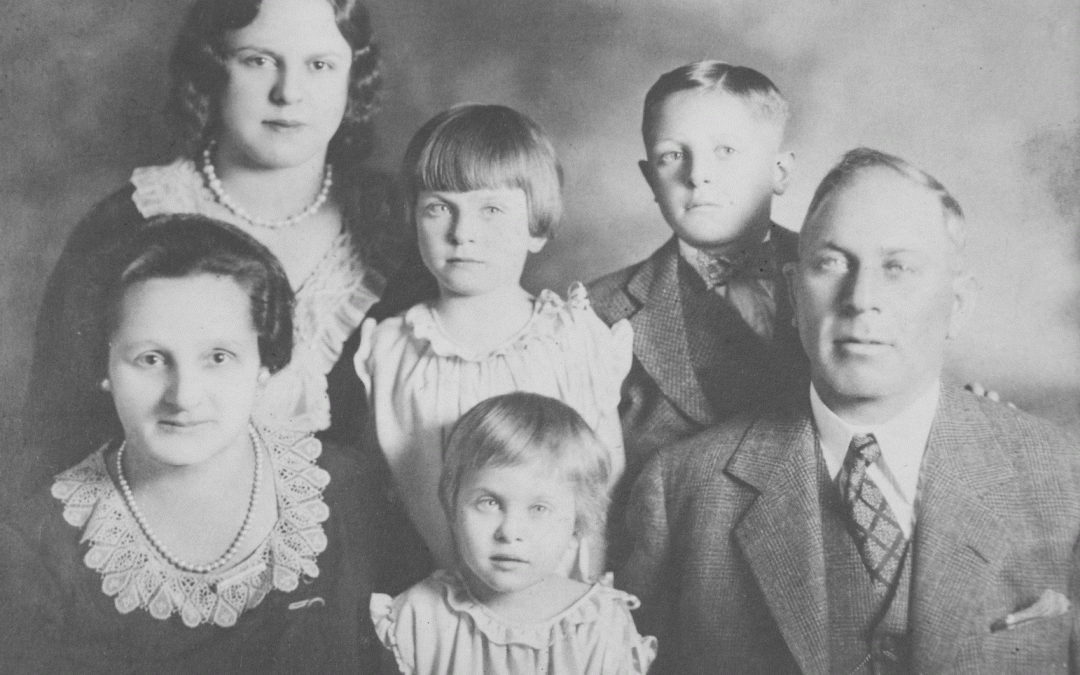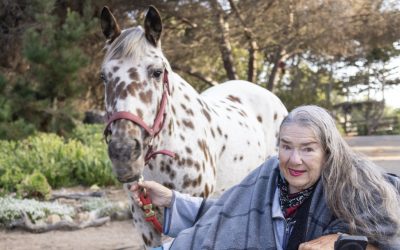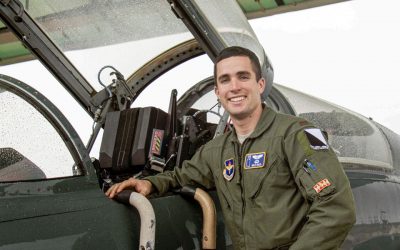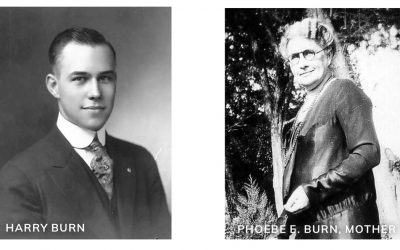Elvira “Vera” Pierce will soon be 92 years old and her vivid memories offer a rare glimpse into history. Her husband, Skinner Pierce, would be unabashedly proud of the young girl he married. Unfortunately, Skinner’s body was never found after one of Big Sur’s unpredictable, earth-moving mudslides buried him amidst 300-foot cliffs, aquamarine waters, century-old Redwoods, and the rugged mountains he admired. The date was April 1, 1983, and Vera Pierce was suddenly a single mom with seven children.
Vera was born in Berkeley on Oct. 9, 1926, and it wasn’t an easy delivery for her mother Hattie Elizabeth DiMartini (maiden name Smith). Hattie gave birth to her fourth child, Vera in the front bedroom of their modest home. With no doctor present, a midwife, aided by Vera’s oldest sister (Josephine), delivered a healthy baby girl — Elvira. An exhausted Hattie survived the ordeal and would later give birth one more time to another girl — Mary. Hattie and her husband (Sebastian DiMartini) would raise five children: Josephine, Sebastian Jr., Angelina, Vera, and Mary.
Eventually, Vera met Ernest Ralph Pierce (nick-named Skinner). Vera was sixteen and a true beauty when they met, so Skinner was smitten. Skinner and his friends hung out at a popular Morro Bay hangout—a building known as the Recreation Center located where Legends bar stands today. This extended building housed several shops, eight pool tables, and a long counter which served as a soda fountain that served milkshakes, burgers, and soft drinks. The owner liked young Skinner and mentioned he needed someone to work the soda fountain and counter. Skinner ran to tell Vera knowing well that if she landed the job, he would see her every day.
Vera never held a job that paid a salary, so she met the owner and was soon hired. The owner taught her to cook, and a seed was planted— she loved cooking! She made $25 a week, gave $10 to her mother to help out, and bought clothes for her sisters and herself.
Vera was born in Berkeley on Oct. 9, 1926, and it wasn’t an easy delivery for her mother Hattie Elizabeth DiMartini (maiden name Smith). Hattie gave birth to her fourth child, Vera in the front bedroom of their modest home. With no doctor present, a midwife, aided by Vera’s oldest sister (Josephine), delivered a healthy baby girl — Elvira. An exhausted Hattie survived the ordeal and would later give birth one more time to another girl — Mary. Hattie and her husband (Sebastian DiMartini) would raise five children: Josephine, Sebastian Jr., Angelina, Vera, and Mary.
Eventually, Vera met Ernest Ralph Pierce (nick-named Skinner). Vera was sixteen and a true beauty when they met, so Skinner was smitten. Skinner and his friends hung out at a popular Morro Bay hangout—a building known as the Recreation Center located where Legends bar stands today. This extended building housed several shops, eight pool tables, and a long counter which served as a soda fountain that served milkshakes, burgers, and soft drinks. The owner liked young Skinner and mentioned he needed someone to work the soda fountain and counter. Skinner ran to tell Vera knowing well that if she landed the job, he would see her every day.
Vera never held a job that paid a salary, so she met the owner and was soon hired. The owner taught her to cook, and a seed was planted— she loved cooking! She made $25 a week, gave $10 to her mother to help out, and bought clothes for her sisters and herself.
Skinner’s dad, Edward Romeo Pierce, was a German pioneer who came to California looking for gold as did many young men. While mining, he met and married a Native American (Salinan Tribe) woman (Antonia Balone) from an Indian Reservation just off Highway 41. She bore him five children before she died.
Edward was a miner staking a claim near Pozo called the Queen Bee. He and his children hunted/fished the wild areas of Jolon and San Antonio Mission near Fort Hunter Liggett. Edward met Skinner’s mother Kate (also Native American) after the death of his first wife. She was much younger than he was, about sixteen years old. She also bore him five children.
Thus, the Pierce family legacy was born and soon Pierces populated this area of the Central Coast. There is not enough room here to tell all their stories, but there are local history books that mention their deeds and accomplishments. Here is one Vera shared.
Edward was a miner staking a claim near Pozo called the Queen Bee. He and his children hunted/fished the wild areas of Jolon and San Antonio Mission near Fort Hunter Liggett. Edward met Skinner’s mother Kate (also Native American) after the death of his first wife. She was much younger than he was, about sixteen years old. She also bore him five children.
Thus, the Pierce family legacy was born and soon Pierces populated this area of the Central Coast. There is not enough room here to tell all their stories, but there are local history books that mention their deeds and accomplishments. Here is one Vera shared.
“The Japanese started the abalone business here, and my husband’s oldest brother, Bill Pierce, watched and learned from them about diving for abalone. By 1930, Bill had bought a boat, equipment, and opened the Pierce Brothers Abalone Shop in Morro Bay. An eccentric fellow, he was conservative with his money—never gambled or drank, which was unusual back then. He owned two houses and a couple of buildings. He took his money and invested it in Morro Bay. My husband, Skinner, was the only one of the Pierce Brothers to go all the way from walking gear with a heavy helmet and 45 pounds on each foot—to a dry suit with a full face mask. He then graduated to the skin gear that’s still being used commercially. It was just a wetsuit, mask, and a hookah for breathing. When he began, the abalone were plentiful and you could use walking gear.”
Vera continued, ”My daughters have done the genealogy and were able to trace the Salinan Indian lineage back eleven generations to the San Antonio Mission. Their 9th grandmother was the first recorded marriage in California in 1773. The Padre married her to a Spanish soldier. Marriages like this were common and are found in Mission records. There is a plaque of her marriage hanging today on the wall at Mission San Antonio. From these Mission records, we can trace our bloodlines all the way back to when Father Serra rang the bell in 1771 to announce the Mission was finally built.”
“My husband, Skinner, was the youngest of the ten Pierces; he was seven years old when his father passed away in 1933. Living in the hills, they sold the deer, quail and hides that they hunted to a big company, B.F. Skinner, out of San Francisco. When a representative came to the homestead to pick up the hides, they shouted, “Here comes Skinner!” When my husband was three or four years old, he picked up on the chanting, and that’s how he acquired the moniker Skinner.”
When I asked Vera what her husband was like, her blue eyes moistened. “He made me laugh. Everyone enjoyed his warm humor. We had seven children together: Pamela, Cynthia, Suzanne, Bonnie, Edward, Ernest Joseph, and finally Hattie. After the four girls, I finally had a boy, so Skinner brought me a dozen red roses. When he died, our house was filled with hard-working, masculine men who had tears in their eyes. When they hugged me, they whispered they had lost their best friend. He was a man’s man, and these men valued his friendship.”
Vera continued, ”My daughters have done the genealogy and were able to trace the Salinan Indian lineage back eleven generations to the San Antonio Mission. Their 9th grandmother was the first recorded marriage in California in 1773. The Padre married her to a Spanish soldier. Marriages like this were common and are found in Mission records. There is a plaque of her marriage hanging today on the wall at Mission San Antonio. From these Mission records, we can trace our bloodlines all the way back to when Father Serra rang the bell in 1771 to announce the Mission was finally built.”
“My husband, Skinner, was the youngest of the ten Pierces; he was seven years old when his father passed away in 1933. Living in the hills, they sold the deer, quail and hides that they hunted to a big company, B.F. Skinner, out of San Francisco. When a representative came to the homestead to pick up the hides, they shouted, “Here comes Skinner!” When my husband was three or four years old, he picked up on the chanting, and that’s how he acquired the moniker Skinner.”
When I asked Vera what her husband was like, her blue eyes moistened. “He made me laugh. Everyone enjoyed his warm humor. We had seven children together: Pamela, Cynthia, Suzanne, Bonnie, Edward, Ernest Joseph, and finally Hattie. After the four girls, I finally had a boy, so Skinner brought me a dozen red roses. When he died, our house was filled with hard-working, masculine men who had tears in their eyes. When they hugged me, they whispered they had lost their best friend. He was a man’s man, and these men valued his friendship.”
After Skinner’s death, Vera shared how she became a cook for the Harbor Hut. Today, many locals still remember the popular “Vera Specials” that were on the menu. Vera worked there for 13 years until (at the age of 56) she decided to start her own “Pier Cafe” at the foot of the Cayucos Pier. She rented the building from Al and Tina Bettencourt for $500 a month.
Larry and Pam Flood helped redesign the small building by adding the many windows Vera insisted upon; she wanted everyone to have a window seat. Soon, there were lines of people hoping to be one of the lucky 40 allowed inside.
“There weren’t many places offering different dishes with plenty of fresh fish in them, so I created famous “Vera Specials”.
The Pier Cafe’s ambience offered the adjacent Cayucos Pier, historic photos of Bill Pierce and his brothers (standing in front of mountains of Abalone shells with hardhat diving equipment nearby), and local art by waitress/artist Michaela Doud. Often, the Pierce children and grandchildren were underfoot as they were put to work early sweep- ing the floor and clearing tables until they grew older.
Two Mexican young men, Carlos and Roberto, started out washing dishes, but ended up skilled cooks backing up Vera. They never forgot the older blue-eyed woman who mentored them.
The family business flourished while Vera cooked or sat at her reserved table socializing with the locals. However, as time passed, rents soared higher and the cafe’s profits just did not pencil out, so the cafe was sold.
Today, Vera lives in her own tiny house, surrounded by family in what some call “Pierce-land” where the surrounding ranch houses hold many of the family’s descendants such as Joe and Renie Pierce (in a house that Joe built with his son Ernest). Pam lives just down the road, and Vera’s daughter Hattie lives close by in the old ranch house.
As my wife and I sat with Vera, her screen door kept swinging open with one or another of her adoring children, grandchildren, or great-grandchildren coming by to check on her. As the matriarch of a historic family, Vera Pierce remains a legend on the coast of Morro Bay, Cayucos, and Los Osos where she is well-loved by all those fortunate enough to know her.
Larry and Pam Flood helped redesign the small building by adding the many windows Vera insisted upon; she wanted everyone to have a window seat. Soon, there were lines of people hoping to be one of the lucky 40 allowed inside.
“There weren’t many places offering different dishes with plenty of fresh fish in them, so I created famous “Vera Specials”.
The Pier Cafe’s ambience offered the adjacent Cayucos Pier, historic photos of Bill Pierce and his brothers (standing in front of mountains of Abalone shells with hardhat diving equipment nearby), and local art by waitress/artist Michaela Doud. Often, the Pierce children and grandchildren were underfoot as they were put to work early sweep- ing the floor and clearing tables until they grew older.
Two Mexican young men, Carlos and Roberto, started out washing dishes, but ended up skilled cooks backing up Vera. They never forgot the older blue-eyed woman who mentored them.
The family business flourished while Vera cooked or sat at her reserved table socializing with the locals. However, as time passed, rents soared higher and the cafe’s profits just did not pencil out, so the cafe was sold.
Today, Vera lives in her own tiny house, surrounded by family in what some call “Pierce-land” where the surrounding ranch houses hold many of the family’s descendants such as Joe and Renie Pierce (in a house that Joe built with his son Ernest). Pam lives just down the road, and Vera’s daughter Hattie lives close by in the old ranch house.
As my wife and I sat with Vera, her screen door kept swinging open with one or another of her adoring children, grandchildren, or great-grandchildren coming by to check on her. As the matriarch of a historic family, Vera Pierce remains a legend on the coast of Morro Bay, Cayucos, and Los Osos where she is well-loved by all those fortunate enough to know her.





